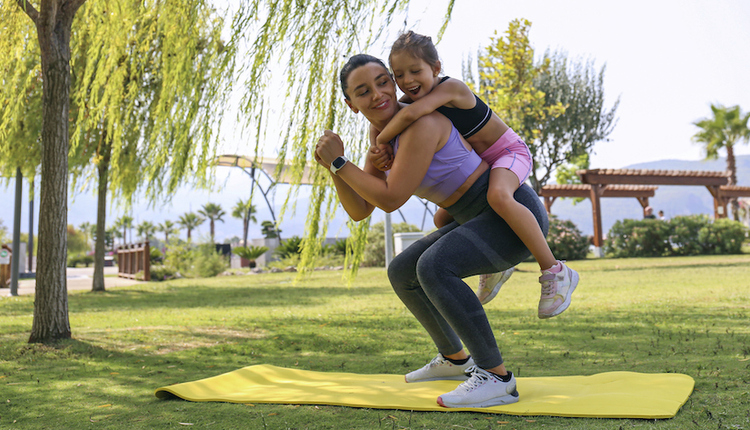>>Missed Part 1? Click here to read it!
Bouncing
Bouncing is term I introduced into personal training because of the effect it has on contributing added value to training sessions and increasing client satisfaction. The concept is very simple: moving your client to multiple locations. What this does is create the impression that more was achieved and more activity was performed during the session. They'll also feel like they did more things and trained for longer period of time than they actually did. Keeping multiple bounces in mind is how I've been able to "hook" clients on my services for such a long time.
The essence of bouncing is going to at least three locations during the session. If you don't think this makes a difference, try it in your next few sessions, and notice whether your client has a different feeling about the workout. Changing locations is almost like hitting the reset button on the workout; it creates a subconscious feeling of starting over. This will alleviate boredom and monotony in your own mind and have your client feel a renewed burst of energy every time you start a new group of activities after a venue change.
By venue change, I'm referring to a very simple change. Some locations in a gym to execute a bounce are:
· Cardio and treadmill area — performing intervals, exercises involving cardio equipment or mixing cardio and weight training
· Aerobics area — performing mat-based, boxing or dynamic training
· Outside — sprinting or dynamic exercises
· Staircase — performing lunges or stair climbing
While it may seem simple to just move around, keeping this consciously in mind and building it into every session will definitely add value. If you can charge $10 more per session just because you're the trainer that moves people around more, isn't it worth it?
The bounce is actually built into my training sheet; I have three locations always set up and firmly in mind as to where to take the client during the training session. These areas shouldn't require too much set-up; remember that your priority is to create client enjoyment during the training session, so the workout should always flow.
Service
Providing outstanding service is a vital part of what we do as personal trainers. Although we're leaders and multi-skilled professionals, we still need to keep the service we provide to our clients in mind. When you put that into the mix, you'll have a product so powerful that the sustainability of your practice will be guaranteed.
What does it mean to give good service? It's just extra attention to the needs of your client. Within the session, this means:
· Helping them rack weights at times
· Handing them weights at times
· Keeping your hands close to them whenever they need spotting
· Keeping your attention on them every minute of the session
· Never answering your phone during a training session, under any circumstances
· Never having a conversation with anyone else in the gym on your clients' time.
Outside of the session, here are a couple of things you can do:
· Respond quickly to their voicemails
· Stay in frequent touch with them through email
· Show up on time to every training session
· Rarely, if ever, cancel or reschedule a session
· Give them holiday and birthday cards and even small presents
The bottom line to delivering better training sessions is just being more present for the sessions. You have to be train your client for an hour anyways, so why not just pay a little extra attention to the details? It's how tuned in you are to your client that separates the $150 session from the $15 session. Which would you rather earn? Well, it all starts with you — how much of yourself you're willing to invest. Since it's not a tangible product we sell, everything comes down to ways you can add more value. If you want to raise your rates, half the battle is improving your session design.
Kaiser Serajuddin is the owner and head trainer of GoHard Fitness Inc. in New York City. He holds a degree in biology fromLong Island University and is certified by the AFAA, IFPA and Spinning. Kaiser also writes and maintains Super-Trainer, a blog delivering some of the most insightful news, training tactics and profiles of other top trainers in the country. For more information, visit www.gohardfitness.com or www.super-trainer.com; you can reach him at kaiser@gohardfitness.com.











